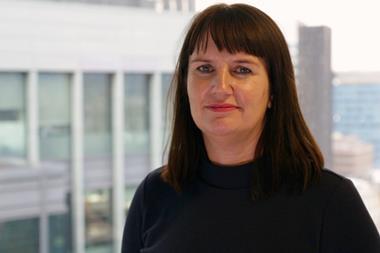Clive Nicholls, president of Crawford & Company in the UK & Ireland says the scale of disruption hasn’t lived up to expectations, and that we should start smaller and more precise
The terms “disrupt”, “disruption” and “disrupted” have been widely used in the insurance market context in recent years, with new technologies and new entrants perceived to be circling a floundering insurance model ready to sink it.
Many aspects of the insurance model are indeed outdated and in desperate need of innovation. Yet while we have seen a number of revolutionary entrants probing the market, insurtech firms offering process and function panaceas, and data giants testing the water, we have yet to see disruption on the scale predicted.

That is not to say that a truly disruptive wave will not come and swamp the current insurance model, but for now the industry remains buoyant.
A few years ago, I attended an event where I was fortunate to sit next to one of the speakers who represented a leading Silicon Valley firm. I mentioned that I worked in the insurance sector, and she informed me that her firm had invested in numerous innovative firms that had helped revolutionize the insurance sector.
I don’t think you have, I replied. I agreed that new innovations were helping to alter the way we distribute our product, the speed at which we can develop our policies, the basis upon which we underwrite and the way in which we handle claims. However, I stated, the fundamental tenet of insurance was unchanged: that the premiums of the many pay for the losses of the few.
Many of the exciting developments we are witnessing are at the higher frequency, lower impact end of the scale. Automation will play a key part in our ability to revolutionize policy creation and claims handling, and advancements such as AI, machine learning and robotic processing – areas which Crawford is focusing on – are already changing how smaller risks are addressed.
The influence of such innovations is perhaps not as strongly felt in the realm of more complex, high value risks and related claims. While our ability to handle larger and more challenging data sets is serving to improving our understanding of such losses, we still need people dealing with people at present to fully get to grips with these large-scale exposures.
There is no doubt that insurtech firms are becoming an increasingly meaningful presence in our market, but not yet on the scale that is required to make foundational change. So far, no specific technologies or companies have dominated to the extent that the market needs to shift.
There are thousands of firms out there, either offering specific standalone products or services, or working in tandem with companies – particularly the larger organizations – to find ways of better integrating their insurtech capabilities into the insurance process.
The market will be impacted significantly by new entrants at some point. Data leviathans such as Amazon and Google are making forays into our market, testing the water in search of a suitable point to jump in with both feet.
For Crawford, we believe such developments will provide opportunity as well as a potential threat to the market status quo. Such new entrants are unlikely to want to build the necessary infrastructure to support their insurance endeavors, and that creates an opening.
The challenge for the insurance industry, at the fundamental level, is relatively straightforward. It is to be able to operate in a way that our customers want us to. Increasingly, that will require the adoption of new processes and technologies, findings better ways to capture and use data, and creating products more aligned with their specific needs.
If our industry needs to be disrupted for that to happen, then it must be and it will be.
Hosted by comedian and actor Tom Allen, 34 Gold, 23 Silver and 22 Bronze awards were handed out across an amazing 34 categories recognising brilliance and innovation right across the breadth of UK general insurance.




















































No comments yet